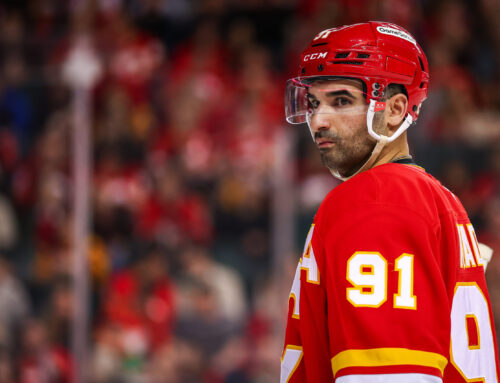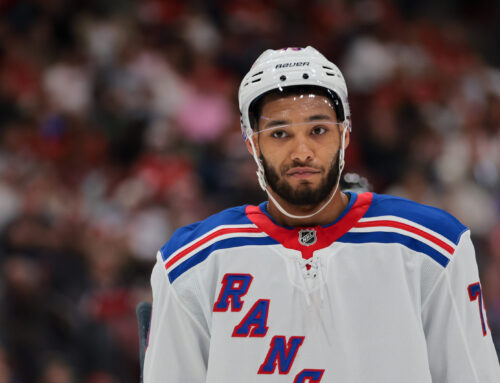We've all been there, screaming at the TV, wondering why the head coach won't give that young player on your fantasy roster more icetime.
It sometimes feels as NHL coaches won't mess with their lineup, like they would rather not change a power-play that ranks 23rd in the league rather than give a couple of young guys more icetime. If a coach does give more icetime, it's usually because an injury or suspension forced their hand.
For this article, I wanted to test if this is true. Going into Friday's games, 490 players have played at least 30 games in each of the last two seasons. This would eliminate rookies from this season and players whose icetime numbers would be skewed by playing too few games.
Of those players, 89 saw at least a two-minute difference in average icetime from one season to the next. That's a whopping 18 per cent, which is higher than I anticipated.
Below are 10 players who have seen a significant increase in icetime from a year ago. Many of them have rewarded patient fantasy general managers with increased production.
Not everyone believes that an increase in icetime automatically equals more production. Mangiapane would be the top exhibit in that argument and the reason why I wanted to include him over more productive players. A year ago, he averaged 13:42 per night with 31 seconds on the power play. So far this season, he's averaging 16:44 per night with 1:46 of power-play time. However, unlike everyone higher on this list, Mangiapane hasn’t seen a significant increase in production. He would be on pace this year for 44 points, slightly higher than the 39-point pace from last year. His shot rate is the same and his hits per game have dropped. There should be some concern if he can't produce more with the extra icetime.
The Stars' forward is the epitome of a hot/cold season. He started with 11 points in 11 games and has seven points in his last six games. In between, he had eight points in 30 games. His icetime has fluctuated throughout the season, but on the whole, he is averaging 16:05 per game, up three minutes per night from 12:59 a year ago. Many of the Dallas forwards have seen a notable increase due to injuries to Tyler Seguin and Alexander Radulov. Those minutes need to be replaced, and it seems like Dallas chose to split that extra time among all the players instead of one player benefitting.
8. Joel Farabee
Three times in the last four years, the Flyers have had one of their draft picks break through into a top-six role. Four seasons ago, it was Sean Couturier. Last year, it was Travis Konecny. This year, it's Joel Farabee who has found chemistry with James van Riemsdyk and Couturier. Farabee's icetime has risen from 14:06 last year to 16:13 this year. He's recently been rotating between the second and third line, but he makes a challenging choice for fantasy general managers for next season. Do you take a chance that he will have a more permanent spot in a top-six role? Scott Laughton has been tried as the second-line centre spot at times recently, but he is pointless in 19 games.
7. Nick Suzuki
Don't look now, but Suzuki's icetime has been falling the past month. From the start of the regular season to March 31, Suzuki averaged 18:40 per night and 2:29 with the man advantage. Since April 1, that has dropped to 16:58 per night and 2:08 with the man advantage. Even with the drop in icetime, he's averaging 18:09 per night, up from 15:59 a season ago. He may not be a 70-point player, but he is being deployed to prove he can be.
6. Yanni Gourde
We all knew that someone would have to step in and eat the 19 minutes that Kucherov normally averages. Gourde is one of those beneficiaries, seeing his icetime increase from 14:04 a year ago to 17:07 this season. This has led to a great benefit for fantasy general managers as well, as Gourde has surpassed his goal and point totals from last year, despite playing 22 fewer games. He's also shooting at a career-high 2.1 shots per game, has a career high in faceoffs won and has improved his plus/minus by 12 points to a plus-seven this year.
5. Martin Necas
Necas is probably having the quietest season of any player that would be on pace for almost 70 points in a normal 82-game season. His icetime has increased from 14:10 last year to 17:21 this year, and with it, a significant increase in production. He's gone from 36 points in 64 games a year ago to 37 points in 44 games this season. His 11 power-play points are already higher than his total from last year, and his shot per game is up from last year. More importantly, he's playing with better linemates, often lining up alongside Sebastian Aho.
4. Joe Pavelski
A year ago, Pavelski started the season on the top line and averaged 18:35 through the first 28 games. He didn't produce, notching 12 points in 28 games before his icetime decreased (he averaged 15:30 in the last 18 games before the season was halted due to Covid-19). Overall, he averaged 16:56, which was a considerable drop from his time in San Jose. This year started much the same way with Pavelski on the top line, but the big difference is that he produced. With 17 points in his first 12 games and never going four games without a point, he wasn't going to lose that spot. In total, he’s averaged 19:27 per game this year.
Finally, the Rangers winger we all knew he could be has arrived. The soon-to-be 27-year-old has slowly (agonizingly so) had his icetime and production increase each season. His icetime this year is up almost two minutes a night to 18:46 from 16:56 last year. Over an 82-game season, he would be on pace for 34 goals, 75 points, 191 shots, 70 hits and 14 power-play points. He's also notched three short-handed goals and four short-handed points, for those in leagues that count that category.
If hockey production was linear, Garland would be a shoo-in for 70 points next season. He's improved his production each campaign, and he is putting up a 58-point pace this year. His shots per game and power-play proficiency have also increased this year over last. His icetime has gone from 14:09 a year ago to 17:44 this year. If you're a fan of fourth-season breakouts, next year should be the one to keep an eye on.
Easily the biggest surprise of the season, Verhaeghe went from the fourth line of the Tampa Bay Lightning last year to a top-six role with the Florida Panthers this season. Verhaeghe has the highest average icetime increase of all players as he almost doubled his average icetime from 9:22 a night with Tampa to 17:46 with Florida. He meshes beautifully with Aleksander Barkov and has rewarded the Panthers with 17 goals and 35 points in 42 games. That's an 82-game pace of 33 goals and 68 points. And he did it without much power-play time. Signed for one more season at just $1 million, he's also in contention for the best contract in cap leagues.





 EDM
EDM PIT
PIT TOR
TOR VAN
VAN FLA
FLA MIN
MIN DET
DET COL
COL STL
STL
